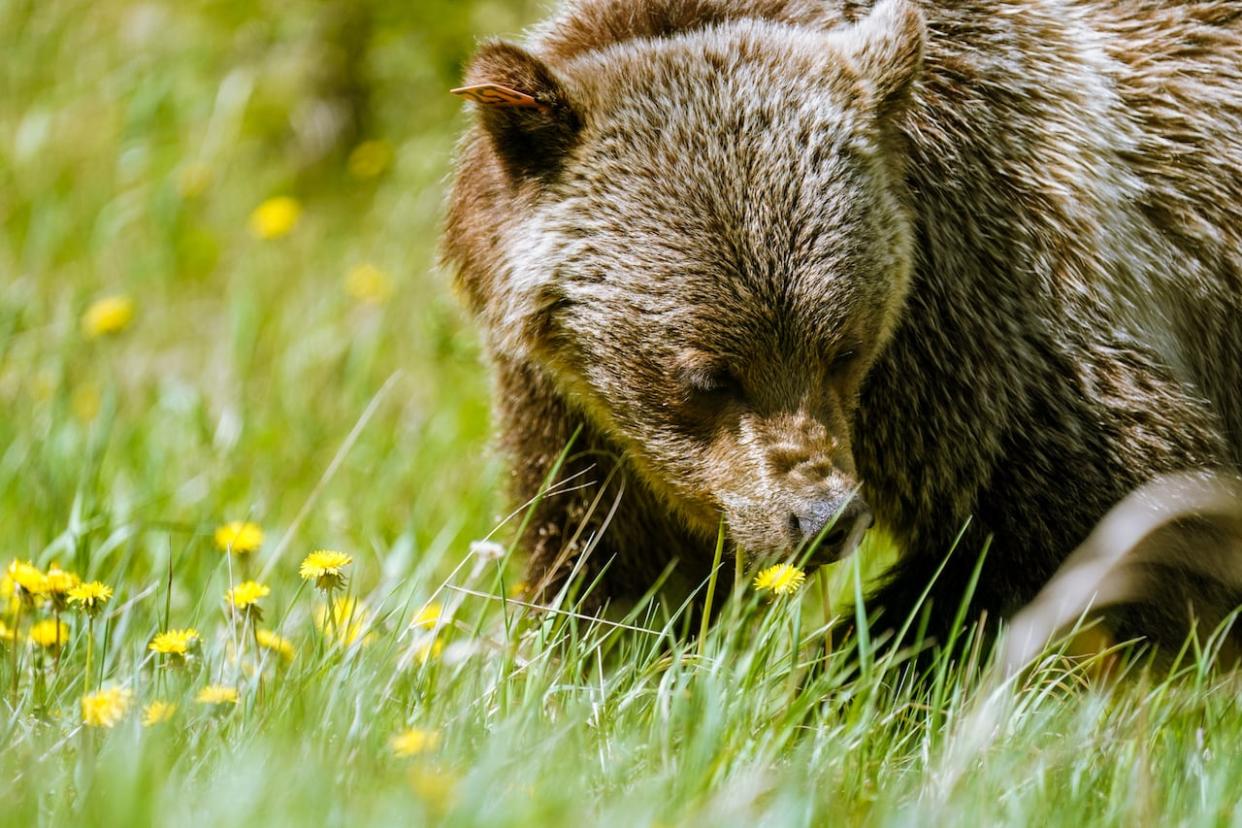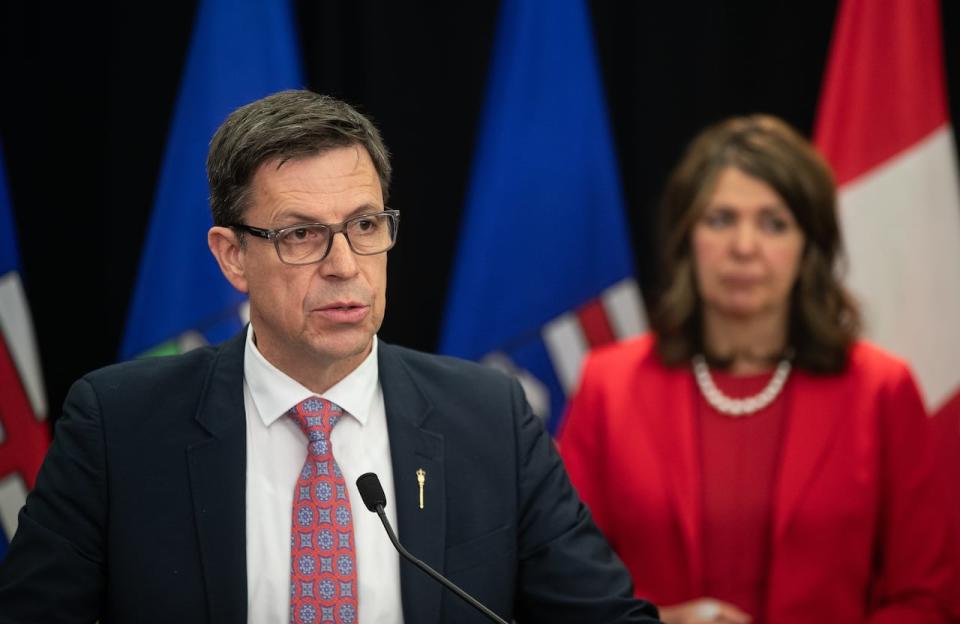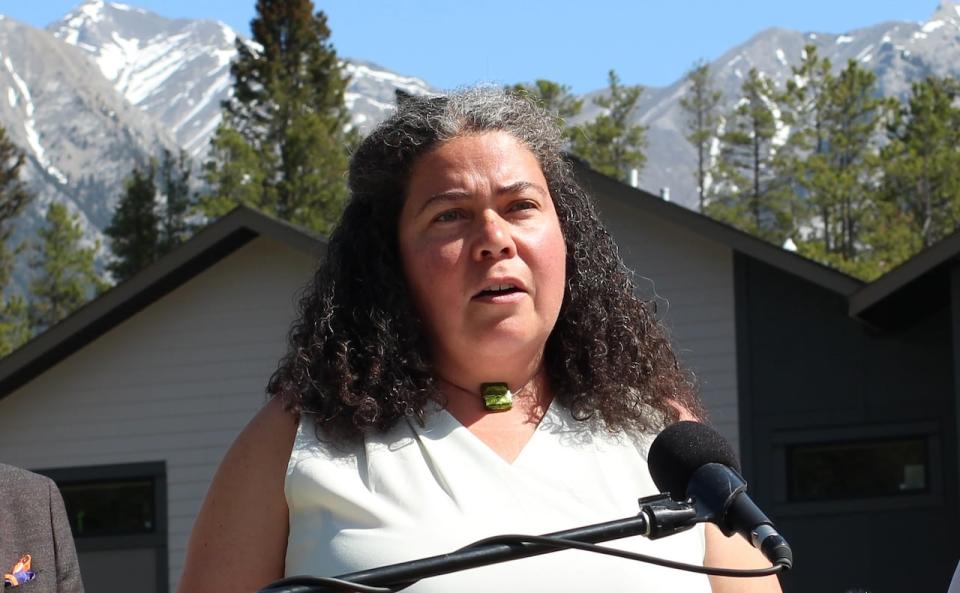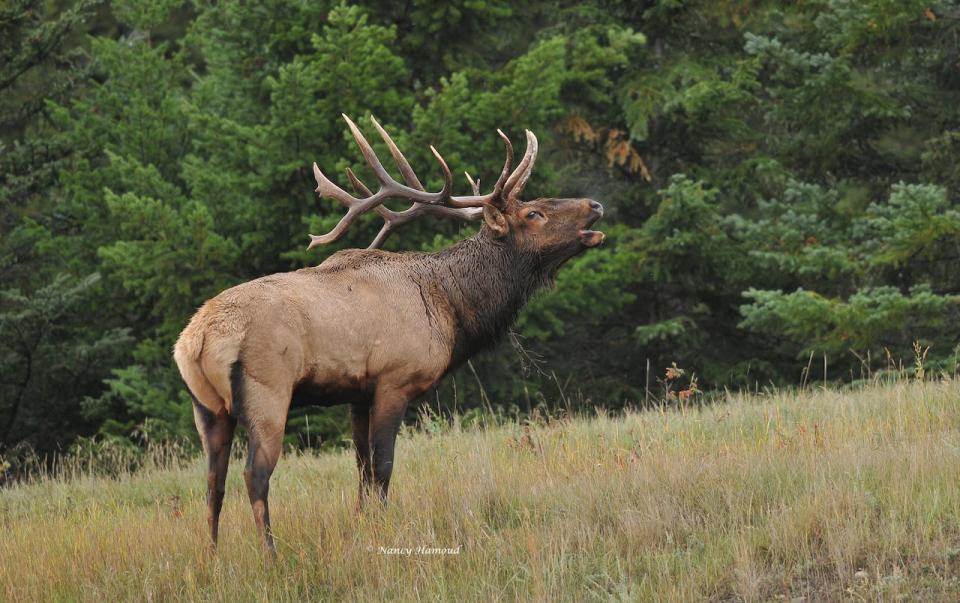Certain 'problem' grizzly bears can now be hunted in Alberta

The Alberta government will permit selective grizzly bear hunts should they meet certain criteria, raising concerns from environmentalists who worry about the impacts on a threatened species.
Forestry and Parks Minister Todd Loewen made the change as part of a June 17 ministerial order. Under the order, the minister may issue what the province refers to as a "grizzly bear management authorization" for the purpose of hunting a grizzly.
"This is an overall management strategy for problem wildlife in particular, to make sure that we can respond to rural Albertans, both their concerns of safety but also loss of crop and loss of livestock," Loewen told CBC News.
The provincial government said there has been a rise in reports of "problematic" and dangerous grizzly-human and grizzly-animal interactions. Some recent conflicts, the province suggests, have been predatory in nature.
In 2020, there were three attacks, while 2021 recorded nine attacks by black and grizzly bears. The province said there were 104 attacks from 2000 to 2021.

Minister of Forestry and Parks Todd Loewen is pictured with Premier Danielle Smith in a file photo. (Jason Franson/The Canadian Press)
The ministerial order states that authorizations can be issued if a grizzly has been involved in a human-bear conflict situation, or if the bear is located in an "area of concern." The bear must not be accompanied by a cub.
Sport hunting of grizzly bears in Alberta ended in 2006, and grizzlies were listed as a threatened species by the province in 2010, when the provincial population estimate was between 700 and 800.
In 2021, efforts to help the Alberta grizzly population recover were credited as the number of bears increased to somewhere between 856 and 973. Today, the province estimates more than 1,150 grizzly bears live in Alberta.
It took a strong effort from biologists to get the grizzly bear hunt suspended in the first place, said Devon Earl, a conservation specialist with the Alberta Wilderness Association.
The worry is that bringing back a hunt, even in a limited capacity, could stifle what has been a successful recovery to this point.
"The risk is that we increase mortality of grizzly bears, and that we undo all of the recovery of the past couple of decades, because we have seen grizzly bear populations recovering in certain areas," Earl said.
"And that doesn't mean that it's time to start up a grizzly bear hunt. It just means that some positive progress has been made. And we don't want to undo that."
Application process to use lottery system
Environmental groups are calling the move, in effect, a reintroduction of grizzly hunting in Alberta. But Loewen views it differently.
The program, he said, is a wildlife management tool that will create a pool of Alberta residents to act as "public wildlife management responders."
"A hunt normally would allow the hunter to choose what, where and when they hunt," Loewen said. "But the … problem wildlife responder will not have any choice of what, where and when they hunt. They'll be told exactly the details of all those."
LISTEN | Parks Minister Todd Loewen explains why people will be allowed to kill some grizzies:
He said this amendment was put forward to specifically deal with problem wildlife, while the word "hunt" in the Alberta Wildlife Act has a legal meaning in legislation.
"If we were to call this a 'hunt,' then we would have to be considering that the work that Fish and Wildlife officers have been doing in the last 20 years has also been hunting, which they're not," Loewen said. "They're taking care of problem wildlife."
The province said wildlife management responders will also be deployed in instances where agricultural losses occur due to elk foraging.
Loewen said an online application process will be used to get on the short-list for the program, and information on how to apply will be released in the coming days. He said there would be a maximum of 15 bears involved in the program each year.
"The application process will be chosen, basically, similar to a lottery or a draw. I won't have any opportunity to interfere with any of that," Loewen said.

Sarah Elmeligi, Alberta NDP critic for environment and tourism, is pictured in a file photo. She said scientific research indicates the best way to reduce conflict is to work with people to better coexist with grizzly bears. (Paula Duhatschek/CBC)
Sarah Elmeligi, Alberta NDP critic for environment and tourism, wrote in a statement that killing grizzly bears does not reduce human-bear conflict.
"Human use management on the landscape — like the livestock compensation program, subsidies for electric fencing, attractant management on public and private land, and better education — are the things that actually reduce conflict," Elmeligi wrote in a statement.
"These programs should be amplified across the province to reduce conflict at its source."
Environmental groups concerned
Groups like the Alberta Wilderness Association and the Canadian Parks and Wilderness Society (CPAWS) have concerns with the changes and with what they view as a lack of consultation.
"If we're going to be making these large changes to a management of species at risk, there should be more consultation," said CPAWS northern Alberta chapter director Tara Russell.
Russell said she found the legislation vague, adding it left her with questions about what requirements exist to label a bear a problem. Russell said she also wanted more information around what defined an "area of concern."
Though the government is referring to the change as a wildlife management tool, the wildlife advocate said she viewed it as a hunt.
"I'm calling it a 'hunt' because the piece of legislation that we saw go through the Alberta Gazette on the Friday of the long weekend is also calling it hunting," Russell said.
"Introducing a hunt … to me and CPAWS, is wildly inappropriate. We shouldn't be applying hunting measures to a species at risk."
While populations in many bear management areas have stabilized and in some cases increased, grizzly bears are still listed as a threatened species, she said.
She said there is a recognition in the province's Grizzly Bear Recovery Plan that as populations recover, population management is needed. But there's also an emphasis on coexistence.
That's what's missing here, she said.
"I do think that prioritizing the conservation of grizzly bear habitat has been the biggest step that's been overlooked," Russell said.
Earl, the conservation specialist with the Alberta Wilderness Association, said bears that need to be euthanized to protect public safety should be dealt with by the appropriate wildlife officials.
"Somebody who is a professional and trained to deal with these circumstances. I don't think it makes sense to bring in somebody to hunt that bear if it's posing an imminent safety risk," Earl said.
Others welcome development
The news was well-received by some who have grappled with grizzlies straying onto their properties, including Win Niebler, a livestock handler and ranch operator outside of Calgary.
"I'm very proud of knowing that there [are] apex predators around my property. The only issue is now, of course, to find that fine balance between making a living with livestock and having those apex predators around, possibly endangering the livestock and families and their livelihoods," Niebler said.
Robert Boos, chair of the Alberta Elk Commission, which represents Alberta's elk farming industry, said livestock businesses that routinely lose their stock to a repeat predator find themselves in very challenging situations.
"Having a harvesting situation is a very good management tool," Boos said.
He said it's important that any individual brought to provide assistance through the new program adhere to strict practices.
"Those people that would be coming onto the farm would have to follow those management practices to a tee," Boos said.

A bull elk is pictured in a file photo. The chair of the Alberta Elk Commission called the harvesting of problem bears a 'perfectly legitimate practice.' (Nancy Hamoud)
In addition to the new wildlife management responders, the province said it would continue to fund educational initiatives intended to prevent human-wildlife conflict, such as the Community Bear Smart Grant program.
Those selected to participate in the new program will be directed to track and respond to grizzlies and other problem wildlife, the province said.
"This action will occur after a problem animal has been reported to wildlife enforcement officers and determined to be a risk to life, livestock or property," reads a release from the province.

 Yahoo News
Yahoo News 
